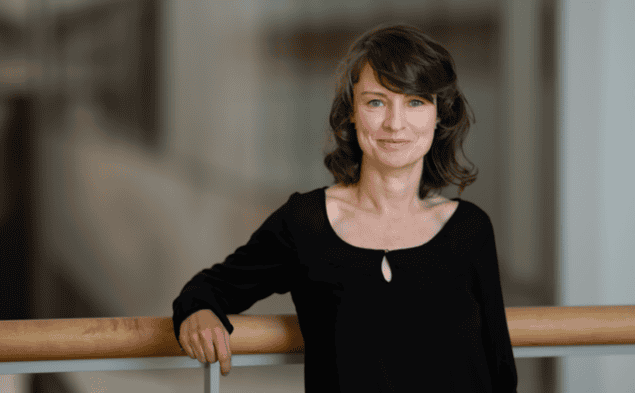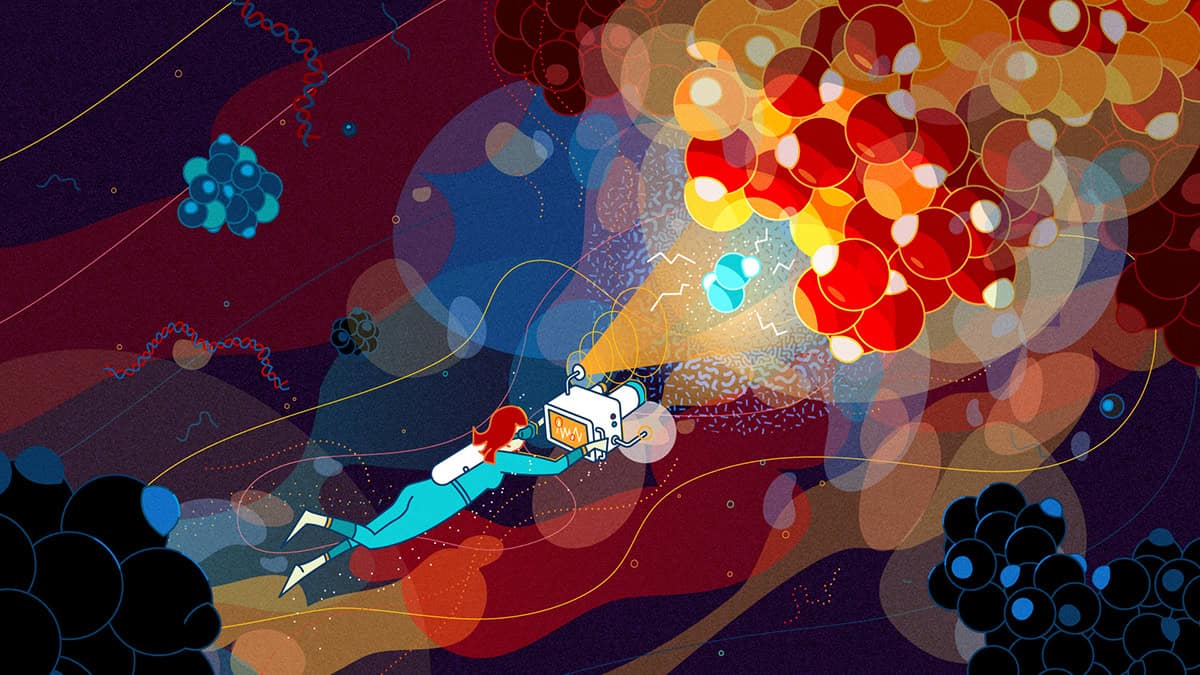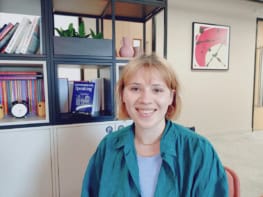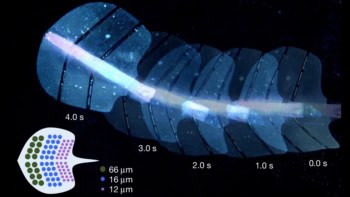Barbora Špačková, who is setting up a new single-molecule optics lab in Prague, talks to Laura Hiscott about moving from theoretical to experimental physics, developing a technique for seeing the invisible, and the joy of refining her technology for real-world applications

On 10 April 2019, physicist Barbora Špačková was peering through an optical microscope in her lab at Chalmers University of Technology in Sweden when she saw a short DNA segment – a biological object so small it was thought nearly unimaginable for conventional microscopy to reveal it. She remembers the exact date, because, in a poetic coincidence, it was the day that the first image of a black hole was released.
While everyone on campus was talking about the iconic astronomical image, Špačková was in the lab witnessing her first successful experiment on the path to a new microscopy technique that today enables other scientists to see molecules just a nanometre in size. “That was a perfect day,” she recalls. “Science is often about 95% failure, troubleshooting and wondering why experiments don’t go as planned. So having that moment of success was beautiful.”
But her path to that moment had not been linear. As an undergraduate studying physics at the Czech Technical University in Prague, Špačková took a two-year break from her studies, during which she worked as a freelance graphic designer. “It was a period when I was not exactly sure what to do with my life. But one night, I woke up with a clear realization that my heart was in science,” she says. “Coming back to the university, I felt more determined than ever.”
After defending her Master’s thesis in physical engineering, which focused on theory and simulations, Špačková felt drawn towards experimental work – particularly technologies with applications in the life sciences. So she started a PhD studying plasmonic biosensors, which use metal nanostructures to detect biological molecules. These sensors exploit surface plasmon resonance, in which electrons on a metal surface oscillate in response to light. When a biological molecule binds to the sensor’s surface, it causes a measurable shift in the resonant frequency, thus signalling the molecule’s presence.
Špačková’s PhD thesis on detecting extremely low concentrations of molecules won her the 2015 Werner von Siemens Award for Excellence. One of the concepts she’d worked on led to her developing a working prototype of a sensor able to detect cancer biomarkers. “I was really happy that I went with my dream,” says Špačková, adding that she “moved from the realm of theory to hands-on experimentation and eventually built a box with a functional button designed to serve a greater good.”
A serendipitous discovery
After her PhD, Špačková wanted to broaden her perspective by working abroad. Fortunately, she found a postdoc matching her interests in the group led by Christoph Langhammer at Chalmers so she and her young family moved there.
The project focused on nano-plasmonic biosensing again, but in a novel configuration, by combining it with nanofluidics. This involves studying fluids confined in nanoscale structures – a technology Špačková had not worked with before. “I had this playground of new toys that I had never seen in my life,” she says. “It was exciting. I learned a lot. I was experiencing a new part of the universe.”
Early on in her project, a colleague showed her a strange optical effect he was seeing in his devices. Špačková decided to investigate, developing a theory of how biomolecules inside nanofluids interact with light. To her surprise, her calculations suggested it should be possible to see even an individual biomolecule.

These nanometre-sized objects had never been seen using traditional optical microscopy, but repeated calculations convinced Špačková she was onto something. With support from her supervisor and help from other team members, she equipped the lab with instruments needed to pursue the theory.
The trick was to put a biomolecule inside a nanochannel on a chip. Although biomolecules scatter too little light to be seen directly, interference with the light scattered by the nanochannel creates a much higher contrast. By subtracting an image of the empty channel from one with the biomolecule inside, the resulting interfered light reveals the presence of the molecule.
While other optical microscopy methods have enabled scientists to see single molecules before, they usually involve labelling these objects with fluorescent markers or fixing them to a surface – both of which can affect their properties and behaviours. The unique advantage of Špačková’s technique – named “nanofluidic scattering microscopy” (NSM) – is that it unveils single molecules in their natural state, moving freely in real time.
Looking at life
When Špačková succeeded in getting the microscope to work in 2019, it was not just a remarkable technological achievement; it was also an exciting step towards potential applications. Her invention could deepen biologists’ understanding of living processes, by showing how biomolecules move around and interact. It could also accelerate drug development, by illuminating how drug candidates interact with cell components.
Recognizing these possibilities, Špačková and her colleagues founded a start-up called Envue Technologies, with support from the Chalmers Ventures incubator, to develop and commercialize NSM instruments. Although Špačková returned to Czechia in 2022, after receiving a grant from the Czech Science Foundation and Marie-Curie Fellowship, she remains a scientific adviser to the company. “This is a super exciting experience for academics,” she says. “You get in touch with the real world and potential end users of your technology.”
Earlier this year, it was announced that Špačková will be setting up one of three new Dioscuri Centres of Scientific Excellence in the Czech Republic – an initiative of the Max Planck Society to support outstanding scientists establishing research groups.
In this programme, Špačková will be working in partnership with a German research group studying molecular transport in cells. The ultimate goal is to develop imaging tools based on NSM, for this application. “We would really like to dive inside this biological nano-universe and observe it in ways that were not possible before,” says Špačková.
It is also the first time that Špačková will be a team leader, and she is looking forward to embracing the challenge of this new role. Reflecting on her career so far, she emphasizes that everyone has a unique path and must tune in to what is right for them. “I think there’s a subtle art of deciding whether to give up or keep going,” she says. “You have to be very careful with the decision. In my case, following the heart worked.”



